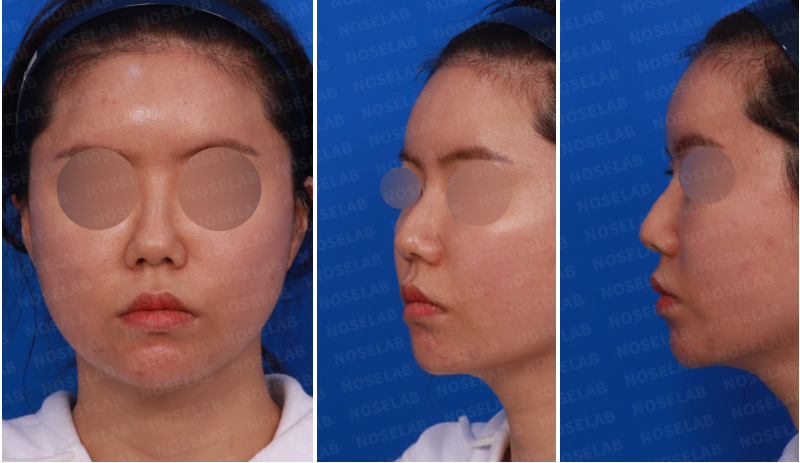Closed Bulbous Tip Correction in Korea: Filler Residue Removal via Alar Cartilage Trimming
- noselab
- 6월 13일
- 3분 분량
최종 수정일: 9월 25일
Hello, this is Dr. Cha-Young Kang, Medical Director of Nose Lab Clinic.
Today, I'd like to share a case of closed bulbous tip correction in Korea, where we addressed a bulbous nasal tip and nasal asymmetry caused by residual HA filler that had not fully dissolved, along with nasal obstruction. This case highlights the importance of both aesthetic refinement and functional restoration through alar cartilage trimming and precise surgical planning.
🔎 closed bulbous tip correction in Korea

Functional Concerns
Nasal obstruction and difficulty breathing
Aesthetic Concerns
Deviated nasal axis
Bulbous tip due to enlarged alar cartilages
Residual HA filler from 5 years ago that had not fully absorbed
Broad nasal appearance from prominent alar cartilage

✨ Patient Goals
Improved breathing
Correction of nasal deviation
Reduction in nasal width and bulbous tip size
💉 Surgical Procedures
Foreign Material Removal
Complete excision of undissolved HA filler
Removal of any residual injection materials
Structural Enhancements
Septorhinoplasty using autologous rib cartilage
Correction of nasal deviation via lateral osteotomy
Alar cartilage trimming to refine the bulbous tip
Functional Restoration
Septoplasty and submucosal turbinate reduction using radiofrequency to relieve nasal obstruction
✅ Surgical Results
Functional Outcomes
Restored nasal airflow
Resolution of chronic nasal congestion

Frontal View
Symmetrical nose with refined contour
Narrowed nasal base and tip refinement
Corrected nasal deviation

Lateral View
Harmonized nasal profile
Naturally contoured tip and nasal bridge

Alar View
Proportional and aesthetically pleasing alar size
Refined, balanced nasal tip

👨⚕️ Specialist Commentary


This case involved complex aesthetic and functional issues stemming from a series of non-surgical and surgical interventions. The patient had received HA filler injections five years prior, followed by an attempt to dissolve the filler a year ago. However, residual filler remained embedded in the tissue, creating asymmetry and fullness in the tip.
While HA fillers are typically reabsorbed over 6 to 12 months, factors such as injection depth, product type, and individual tissue response can result in prolonged presence or encapsulation. In this case, surgical removal was necessary to fully resolve the issue.
Additionally, the patient had undergone a questionable procedure involving an injection intended to "melt" fat or cartilage in the alar region. This unverified method can be harmful and may damage vital nasal structures, highlighting the need for evidence-based treatment.
The patient’s primary concern was a bulbous, wide nasal tip. Intraoperatively, we observed significantly enlarged alar cartilages. We performed precise trimming to reduce nasal width while maintaining natural contours. This type of cartilage reshaping demands meticulous technique to avoid collapse or unnatural appearance.
To address breathing issues, we concurrently performed septoplasty and turbinate reduction. These interventions alleviated obstruction and improved nasal function.
Ultimately, we successfully removed residual filler, corrected the deviated nose, and refined the bulbous tip with targeted cartilage trimming. The result is a balanced, elegant nasal contour that aligns with the patient’s expectations both functionally and aesthetically.
Thank you,Dr. Cha-Young KangMedical Director, Nose Lab Clinic


Messenger(WhatsApp) : +82 1057360302
Home page : www.noselab.co.kr
Instagram : noselab_global
YouTube : Noselab
Email : noselab@naver.com



댓글